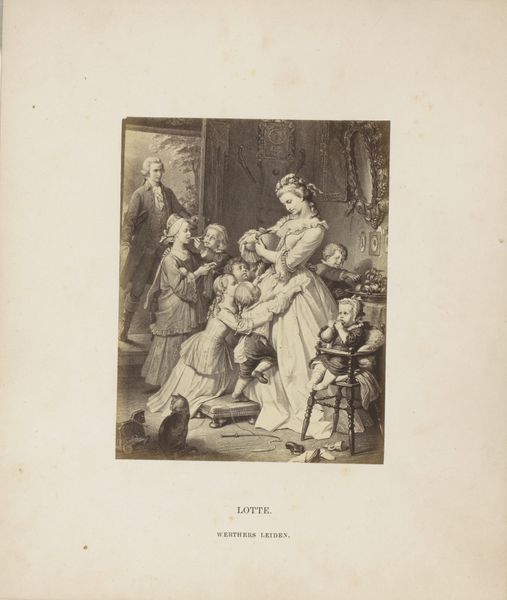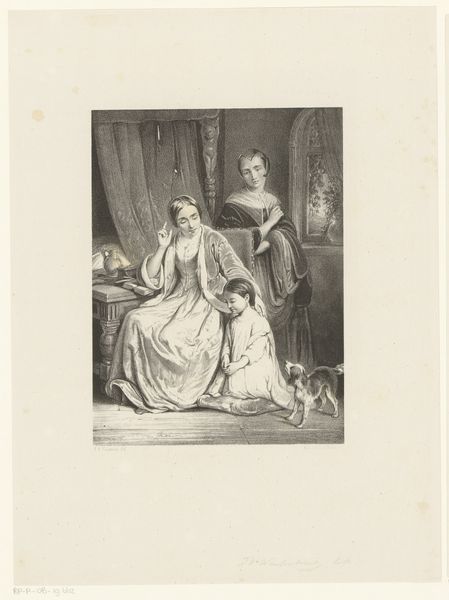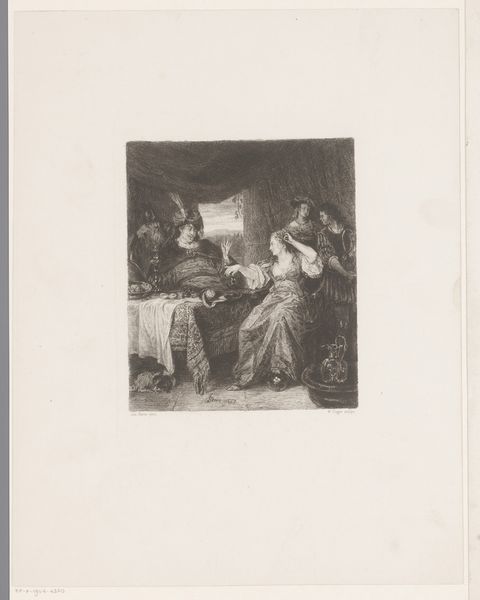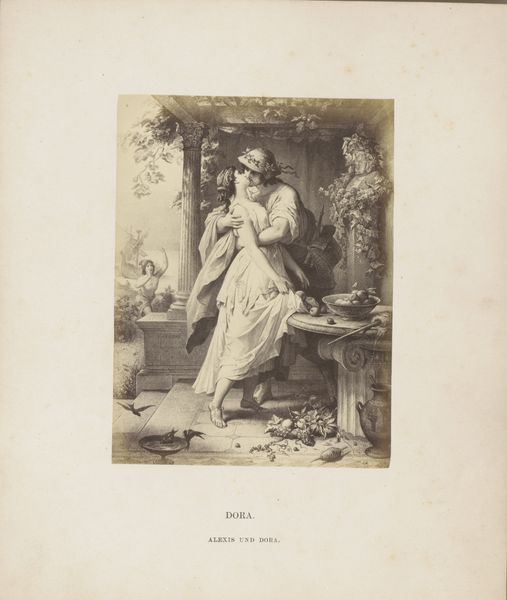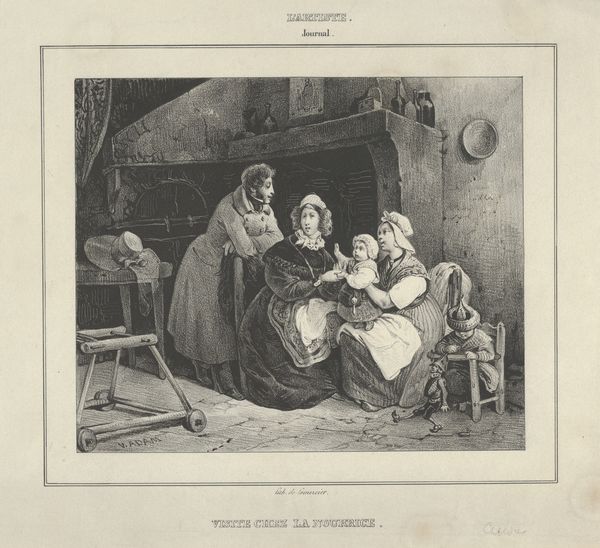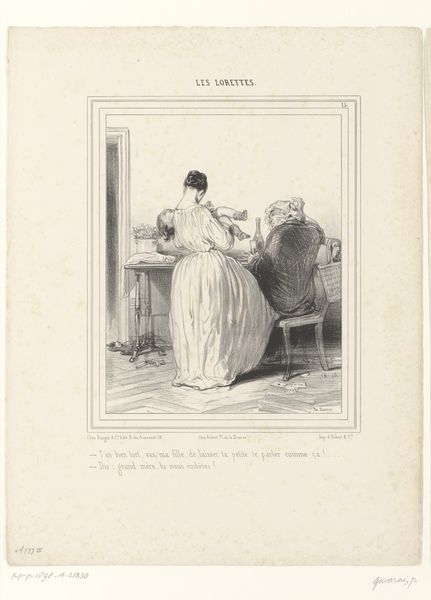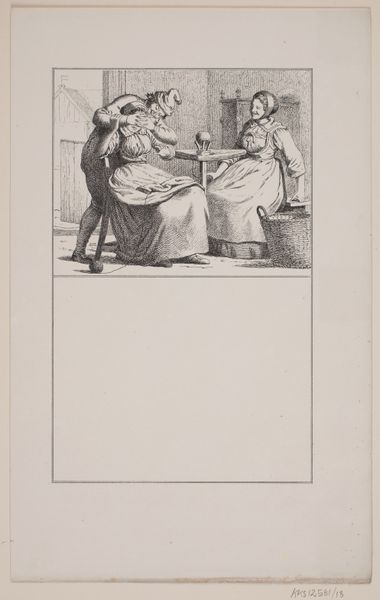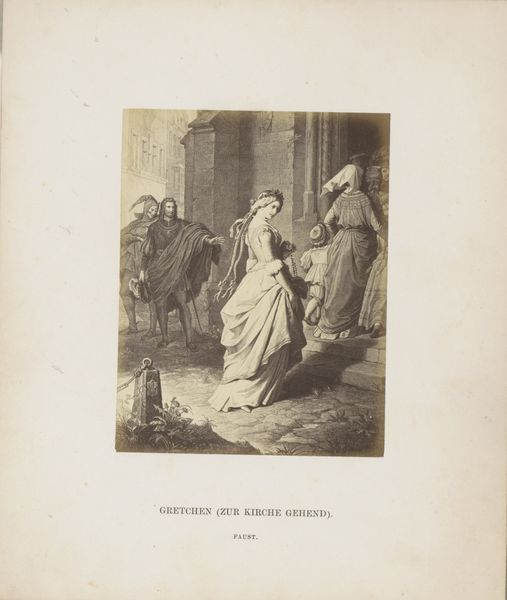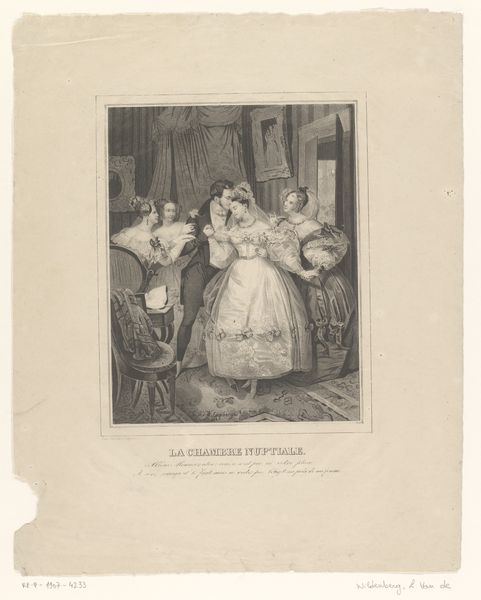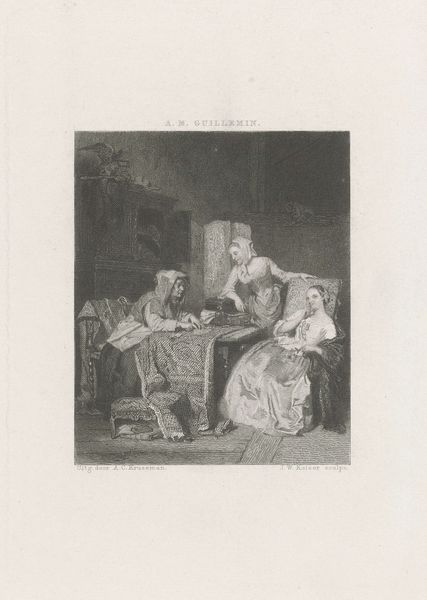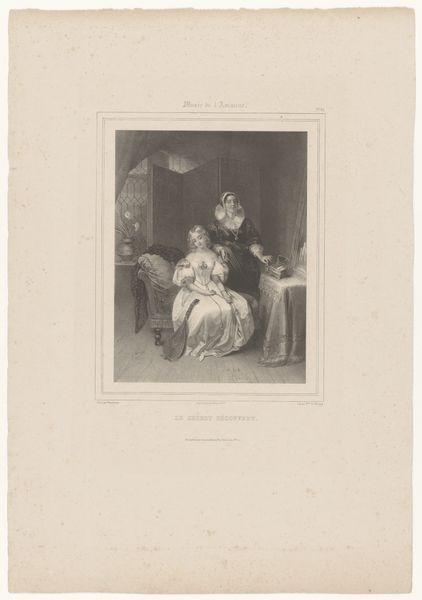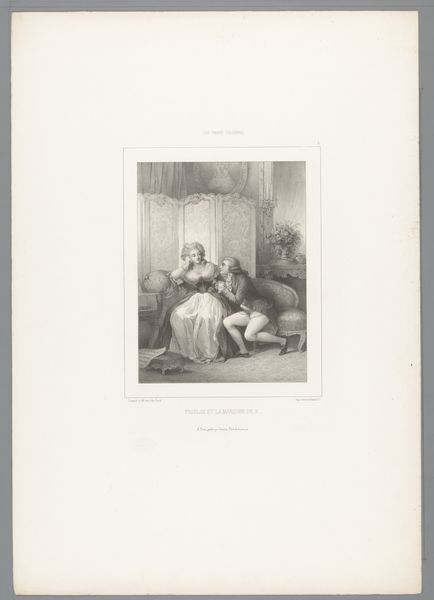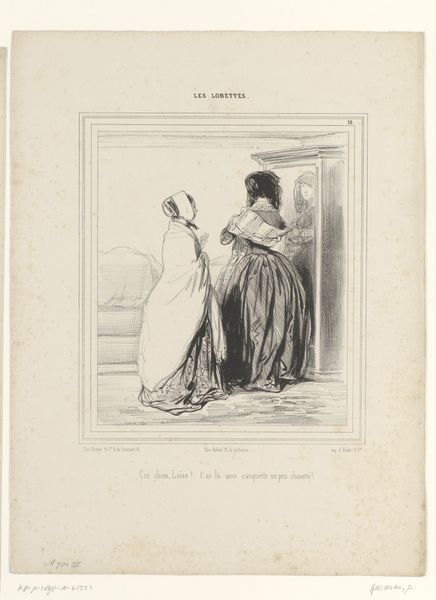
Fotoreproductie van een tekening van Eugénie uit Goethe's Die Natürliche Tochter door Wilhelm von Kaulbach 1850 - 1900
0:00
0:00
Dimensions: height 211 mm, width 178 mm, height 131 mm, width 97 mm
Copyright: Rijks Museum: Open Domain
Editor: Here we have a reproduction of a drawing by Wilhelm von Kaulbach, sometime between 1850 and 1900. It’s based on Goethe’s "Die Natürliche Tochter," featuring Eugénie. It’s an engraving and feels very much of the Romantic era... all drama and veiled emotions. What can you tell me about its place within its own time? Curator: It’s interesting to consider the relationship between Kaulbach, Goethe’s play, and the broader context of 19th-century Germany. Reproductions like this made art accessible, fostering a shared cultural understanding, but also solidifying specific interpretations of literary works. What sort of power do you see in disseminating imagery linked to national identity and ideals, especially in a fragmented Germany searching for unification? Editor: So it's more than just illustrating a play; it's about building a shared cultural understanding. I guess by distributing it widely they tried to enforce it on the German population? It also looks like some older painting was put into a picture on the background, how does this intertwine in the story? Curator: Precisely! Consider the role of art academies, printmaking, and even museum collections in shaping and controlling visual culture. They reinforced certain artistic styles and historical narratives. And notice how this print seeks to validate the story not just through textual reference, but by embedding it in the visual language of "high art," referencing older painting. To what extent does that background portrait, that symbol of historical legitimacy, shape how we perceive Eugénie’s story? Editor: So the art itself is reinforcing the legitimacy of the story it tells. It's interesting to consider the role of reproduction in either democratizing art or... enforcing a particular cultural view. Thanks for pointing that out! Curator: Exactly! Reflecting on how the image functions socially reveals much about the power dynamics of the period, even beyond the immediate subject matter.
Comments
No comments
Be the first to comment and join the conversation on the ultimate creative platform.
